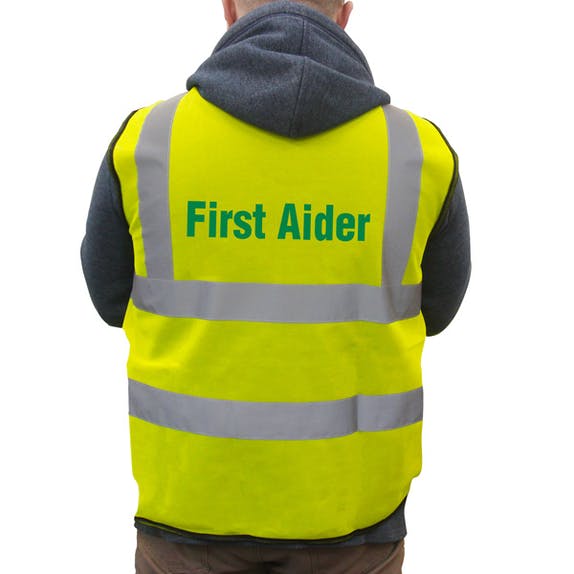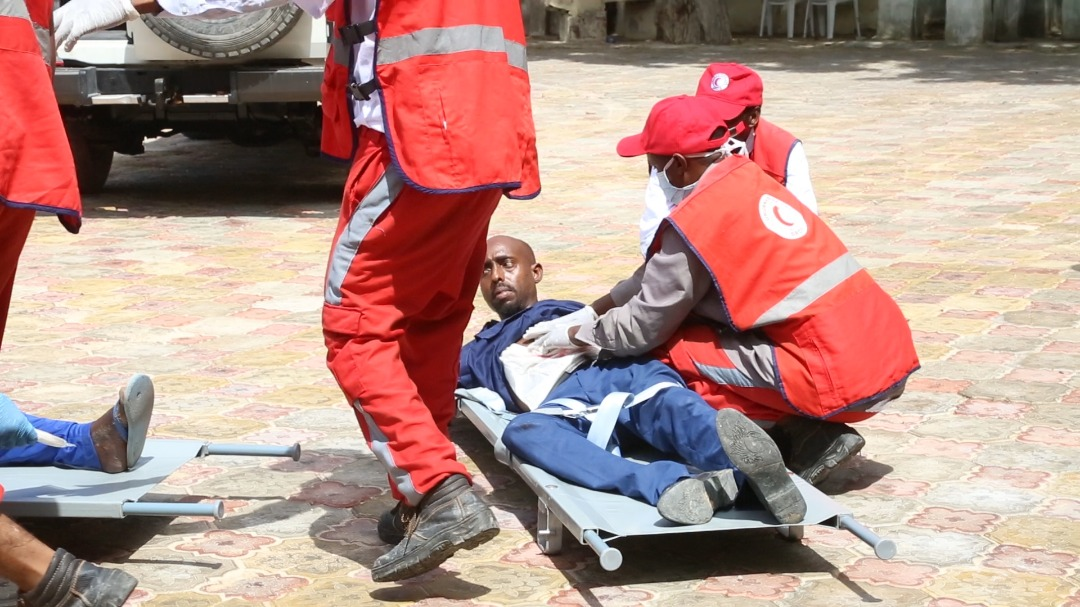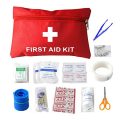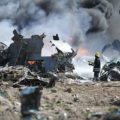Millions of people are hurt or killed from injuries every year because adequate and timely assistance is not provided. Effectively, first aid reduces deaths, injuries, and impact during disasters and daily emergencies.
It provides an immediate response to an emergency, taking life-saving measures until professional help arrives. Simple first aid skills, and the confidence to use them, can save lives and everyone, if properly trained, has the potential to save lives.
History and trend
Skills of what is now known as first aid have been recorded throughout history, especially in relation to warfare, where the care of both traumatic and medical cases is required in particularly large numbers. The bandaging of battle wounds is shown on Classical Greek pottery from c. 500 BC, whilst the parable of the Good Samaritan includes references to binding or dressing wounds. There are numerous references to first aid performed within the Roman army, with a system of first aid supported by surgeons, field ambulances, and hospitals. Roman legions had the specific role of capsarii, who were responsible for first aid such as bandaging, and are the forerunners of the modern combat medic.
Further examples occur through history, still mostly related to battle, with examples such as the Knights Hospitaller in the 11th century AD, providing care to pilgrims and knights in the Holy Land.
Formalization of life-saving treatments
During the late 18th century, drowning as a cause of death was a major concern amongst the population. In 1767, a society for the preservation of life from accidents in water was started in Amsterdam, and in 1773, physician William Hawes began publicizing the power of artificial respiration as means of resuscitation of those who appeared drowned. This led to the formation, in 1774, of the Society for the Recovery of Persons Apparently Drowned, later the Royal Humane Society, who did much to promote resuscitation.
Napoleon’s surgeon, Baron Dominique-Jean Larrey, is credited with creating an ambulance corps (the ambulance volantes), which included medical assistants, tasked to administer first aid in battle.
One hundred and fifty years ago, a battle in northern Italy sparked an idea that has since changed the world. On 24 June 1859, Henry Dunant, a young Geneva businessman, witnessed horrifying suffering and agony following the battle of Solferino. He mobilized the civilian population, mainly women and girls, to care for the wounded irrespective of their role in the conflict. He secured them with the necessary materials and supplies and helped in the establishment of temporary hospitals. His book “A memory of Solferino” inspired the establishment of the International Committee of the Red Cross (ICRC) in 1863. Today, the need for humanitarian action is still as vital as it was in 1859.
Providing first aid services to injured people was one of the first services provided by the Red Cross Red Crescent volunteers for over 100 years. Now, almost all 187 Red Cross Red Crescent (RCRC) National Societies (NS) have first aid as their core activity. Aware that task-shifting (a process of delegation whereby tasks are moved, where appropriate, to less specialized persons) has become a very important process to address health challenges in the last few years, RCRC National Societies are the major first aid educator and provider in the world.
Today, there is a growing interest of private and public sectors alike in ensuring that their respective employees and the population at large receive first aid training. Due to the awareness on the importance of first aid techniques knowledge in reducing the consequences of any type of accident, special attention is increasingly paid to first aid and prevention. The first witness of an accident plays an essential role in the survival chain. The general public should be encouraged to learn first aid since they are often the first present on the spot and thus the first link in any survival chain (pre-hospital care).
Who is a first aider?
A first aider is someone who has been trained to give immediate medical help in an emergency. He or she would have completed training appropriate to what is needed in the workplace. They will have a certificate of competence in either first aid at work, emergency first aid at work, or another equivalent qualification. There is a usually mandatory three-day course and a one-day option for small businesses. All qualified first-aiders must attend a two-day requalification course every three years.
The Nigerian Red Cross offers training and certifications for people, for work, parents and anyone who wants to learn the first aid skills needed to help in a first aid emergency.
What Are The Responsibilities Of A First Aider?
First aid is the immediate help given to someone who is ill or injured. A first aider gives this immediate help to the casualty while making sure that the casualty and those around the casualty (including themselves) are safe.
Sometimes an injury is minor and a workplace first aider can manage this without further help. For example, injuries such as minor burns, cuts, and bruises. For more serious injuries, the first aider must reassure the casualty while they are waiting for medical help to arrive, either by a doctor, a medical professional, or going to the hospital.
In an emergency, first aider responsibilities are:
- Manage the incident and ensure the continuing safety of themselves, bystanders and the casualty
- Assess any casualties and discover the nature & cause of their injuries or illnesses
- Arrange for further medical help or other emergency services to attend. Usually by making an emergency phone call to 999 (in the UK) or 112 (worldwide).
- If trained, prioritize casualty treatment based on medical need
- Provide appropriate first aid treatment that they have been trained to do, and that is reasonable in the circumstances
- If able, make notes and record observations of casualties, ideally monitoring Vital Signs, and SAMPLE information
- Provide a handover when further medical help arrives
- Fill out any paperwork as required following the incident
The first aider is to provide immediate, potentially lifesaving, medical care, before the arrival of further medical help. This could include performing procedures such as:
Responsibilities of a ‘workplace’ first aider
The Health and Safety laws and regulations require employers to provide adequate and appropriate first aid equipment, facilities, and people. To enable your employees to be given immediate help if they are injured or taken ill at work.
What is ‘adequate and appropriate’ will depend on the circumstances in your workplace. The minimum first aid provision on any work site is a suitably stocked first aid kit, and an ‘appointed person’ to take charge of first aid arrangements. Being an ‘appointed person’ for first aid is a responsibility not to be undertaken lightly.
Qualities Of A Good First Aider
We have the listed 10 qualities below that make a good first aider. They include;
- Good Communicator. Communication is important for emergency management/managers to fully prepare, and respond in a timely manner. Communication is the key to effective mitigation, preparedness, response, and recovery. A good first aider must be able to communicate effectively with other first aiders and medical staff. Well-conceived and effectively delivered emergency messages can save lives ensure public safety and facilitate response efforts, during emergencies.
- Quick and smooth. First aid providers have to be very quick in their actions. As soon as some accident takes place, they have to be quick in response and take over the situation immediately, without any delay. Hesitation, doubts clouding the face, and panic, this damage the already injured victim.
- Controlled and calm. Without showing any panic, you should be able to perform in front of the people and the victim. Your actions should exhibit confidence, the only thing that can calm scared people. The first aid training you have undergone has given you the skills; there is no reason to panic.
- Intelligent and decisive. You should be able to decide the course of treatment within seconds. Depending on what is there in front of you, you should take an immediate yet wise call, and keep the injured person stable till help arrives. If there is more than one casualty, you must be quick to judge and must start working on the victim who needs attention the most.
- Resourceful. Your first aid kit should, at all times, have the required material without fail. In case you don’t have it, you should make immediate arrangements or look for the right alternatives off what is available. You should be able to use the people around you resourcefully, delegating responsibilities to people around you.
- Reassuring and sympathetic. It is your duty as a first aider to reassure the victim that you are there to take care of him and that help is on its way. You need to be calm, kind, and sympathetic to the victim’s calls. The victim needs reassuring words. He needs to be told that everything will be alright and that he is in safe hands. This quality is the most important when it comes to dealing with small kids in schools and play schools.
- Skilled. A first aider has basic medical skills. You are trained to perform these skills under pressure. You should have the right skills to judge the problem depending on the symptoms and make quick calls. If you require help, you should be able to garner some from the crowd and should be able to take charge and lead.
- Efficient. You should be able to start the first aid without the victim feeling too much pain or without increasing his pain anymore. There is never any time to waste when there is a medical emergency. With the available resources, you need to attend to as many casualties are there, till help arrives.
- Team Player. Teamwork is an essential and integral part of the successful management of sudden mass casualty incidents (SMCIs) and disasters. A good first aider must be able to work with other first aiders and medical staff to reduce deaths, injuries, and impact during disasters and daily emergencies.
- Confident. As a first aid provider, you must have faith in yourself and your actions before you start first aid on the victim. The confidence that you would exhibit while performing would reassure the victim and the onlookers.
The Importance Of First Aid
It allows those trained with the potentially life-saving ability to assist an injured or ill person during a variety of emergency situations.
In situations such as someone ingests a harmful substance, suffers from a heart attack, a seizure or stroke, is involved in a motor vehicle accident, or is caught in a natural disaster, a person trained and knowledgeable in even the very basics of First Aid can be of extreme importance in assisting the injured person(s) until emergency responders arrive. The more people that are First Aid trained and knowledgeable, the more the community as a whole benefit.
Knowledge of First Aid benefits the individuals themselves regardless of whether an emergency affects them directly or involves people they live and work with. First Aid can and often lessens the severity of an emergency in a given time and place.
While everyone can benefit from First Aid knowledge and training, it is an even greater benefit to those working or living with individuals who require ongoing special attention or treatment such as children, persons with physical or mental disabilities, persons with chronic illness, persons with disorders such as epilepsy, the elderly, persons involved in recreational activities such as swimming or people working in dangerous environments such as a factory or construction site. See More On : 5 Key Importance of First Aid You Should Know







